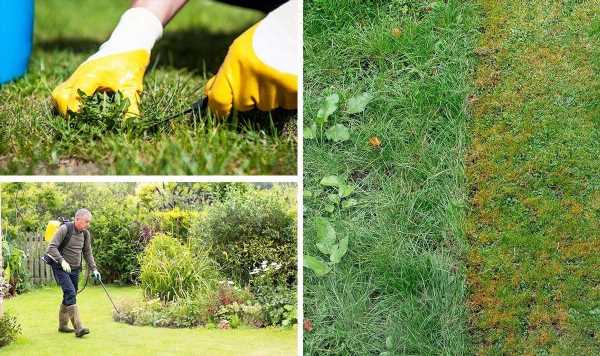Bunnings show how to remove weeds and moss from your lawn
We use your sign-up to provide content in ways you’ve consented to and to improve our understanding of you. This may include adverts from us and 3rd parties based on our understanding. You can unsubscribe at any time. More info
Lawn weeds are embraced by some gardeners but are viewed as a nuisance by many. While commercial weed killers are the go-to remedy for killing unwanted growth in your garden grass, there are many non-chemical alternatives that can do the job just as well – without compromising healthy green blades on your lawn. These are the best ways to remove unwanted weeds from your spring lawn.
How to remove lawn weeds without weed killer
Lawn weeds are notoriously hard to get rid of because they can survive simple maintenance tasks like mowing – with many species known to resist herbicide treatments too.
The self-seeding nature of some flowering and tall stemmed weeds makes them even harder to control in large numbers with weedkillers alone, making natural alternatives the most viable option in most cases.
Digging weeds out of your garden grass is the simplest way to remove stubborn growth, but what other cultural controls can be used to tackle this common gardening problem?


Nourish your lawn to encourage new growth
Balancing the growing environment is crucial to stimulate fresh grass on your lawn while controlling unwanted weeds.
The Royal Horticultural Society (RHS) said: “Feeding, aerating and scarifying will encourage the grass to be more vigorous and so make it more difficult for the weeds to compete.”
To nourish your garden grass, you should:
- Feed your lawn with a seasonal fertiliser to provide optimum nutrients
- Aerate your lawn using a gardening fork to create small, deep holes in the turf layer to improve air flow and oxygen
- Use a spring tine rake to lift deep rooted thatch and remove surface debris from your lawn
- Overseed any bare patches a few weeks after scarifying to fill bare patches

Dig-up flowering weeds
Bright yellow dandelions and dainty white daisies should be removed by hand to uproot these stubborn weeds.
Use a hand fork to disturb the roots and lift these rosette-type varieties from your lawn to free up space for fresh grass growth.
Plantain – also known as broadleaf plantain – should also be removed this way, so keep an eye out for the large green flowers hiding in the soil.
DON’T MISS:
Gardeners’ World pro says water ‘when a lot of the soil is exposed’ [ANALYSIS]
Lawn tips: ‘Most beneficial’ way to achieve a ‘thicker greener lawn’ [INSIGHT]
‘Perfect time’ to eradicate moss from lawns – how to ‘kill it’ [REVEAL]

Rake and mow your lawn regularly
While most weeds can withstand mowing, establishing a regular raking and cutting routine throughout spring is one of the best ways to stay on top of stubborn growth.
Creeping weeds such as speedwells, white clover, silverweed, and sorrels will respond best to this method, so stay consistent with a gentle rake followed by a tall-cut as often as needed.
According to the RHS, close mowing should be avoided with parsley piert and pearlwort, as this can weaken the grass and allow the weeds to thrive, rather than disappear.
Balance your soil
The pH level of the soil is a key factor in growing a luscious weed-free lawn, and altering the acidity is one of the best ways to deter nuisance growth.
Sorrels and field woodrush are two of the most responsive weeds to unfavourable soil conditions, so make use of garden lime to discourage these unwanted plants from your lawn.
Simply dress the grass with garden lime using 50g per square meter.
This simple ingredient is a type of rock powder which raises the pH level of soils high in acidity, working to sweeten a soil that is naturally ‘sour’.
Source: Read Full Article
